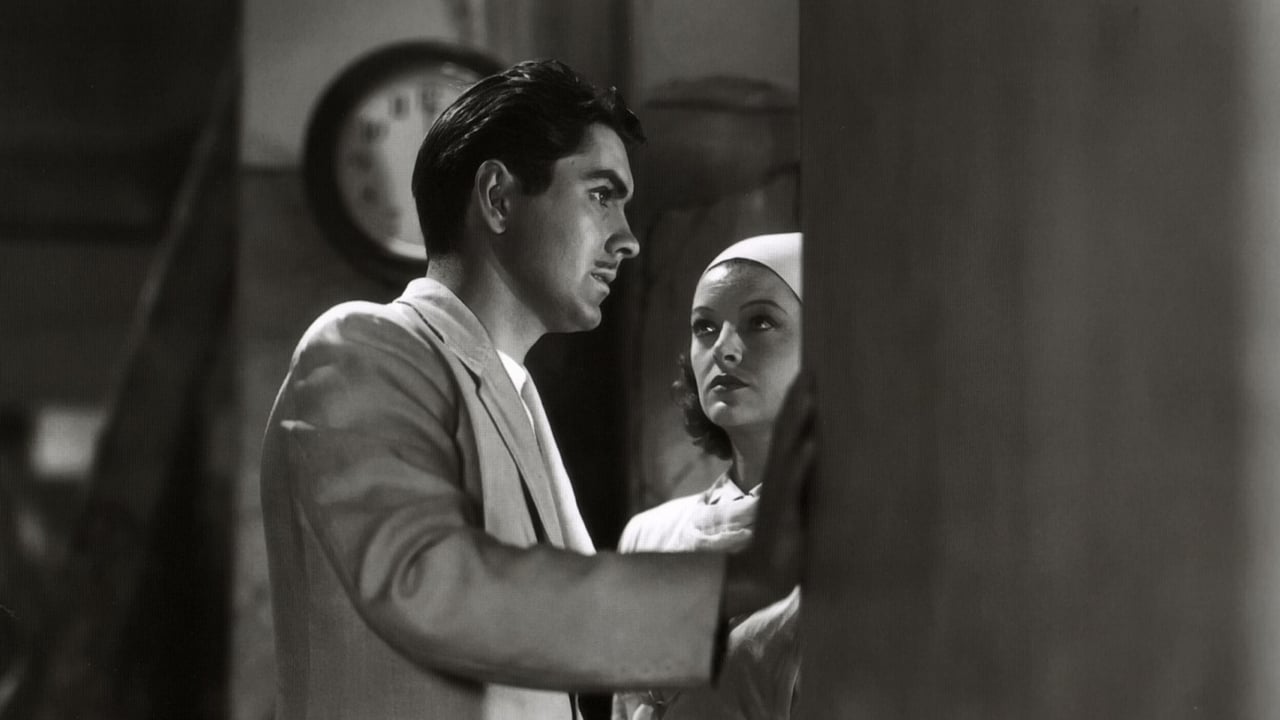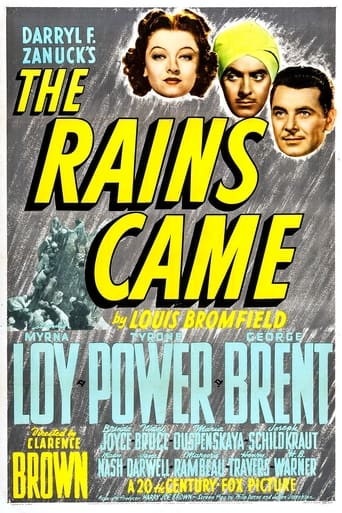

Note the running time: 104 minutes. A richly-plotted, 600-page novel reduced to a mere 104 minutes? One fears that far too much of the novel has been condensed or even skipped entirely and alas, this fear proves to be well-grounded. Louis Bromfield's "The Rains Came" may not be great literature but it is a great "read," one of those larger than life sagas which sets a host of vibrant characters against a panoramic background of exotic richness. Hollywood, however, reduces this material to a movie which, despite its glamorous cast and handsome mounting, is barely a notch above the routine.Missing from the movie are (1) Miss Dirks and Miss Hodge, the British spinsters who run the Girls' High School (2) Fern Simon's younger sister, Hazel, (3) Maria Lishinskaya, companion to the Maharani, (4) Harry Bauer, the Swiss nurse loved by Maria Lishinskaya, (5) Harry Loder, who wants to marry Fern, (6) the annoying Miss Murgatroyd, (7) Bertha Smiley, whose role as Mr. Smiley's wife has been taken over by Aunt Phoebe, plus a host of Hindus, Muslims, and Sikhs who now, at most, are simply glimpsed in the background. Even those who are left, such as the redoubtable Mrs. Hoggert-Egburry and the social-climbing Mrs. Simon, are sometimes reduced to just a single scene. By severely reducing and simplifying the novel's impressive cast of characters, "The Rains Came" loses its "epic" quality and becomes a mere tale of two-sets of disparate lovers: Lady Edwina and the Hindu doctor, plus Tom Ransome and young Fern. Even these two romances lack resonance because so much of the characters' backgrounds has been left out. (Perhaps Fern Simon has lost the most in the transition from book to screen. Her yearning to be "Blythe Summerfield, The Pearl of the Orient," has been almost entirely ignored, and she seems curiously uncaring that her parents have apparently been killed in the flood.) Yes, the sets reflect the skill and opulence of Hollywood's Golden Age, and the special effects -- for 1939 -- are quite impressive, but the result still strikes one is being little more than a passable exercise in "escapism."Myrna Loy seems a bit miscast and while George Brent isn't a particularly good choice as Tom Ransome, he's better in the role than one might expect.
... View MoreThink of the year - 1939. It was 'THE' year for Hollywood with all the great movies that came out. But the utmost highest quality of the special effects in this movie had me spellbound. You must watch it and try to absorb the enormity of the effects required while still being pulled into the story line. The actual story showcases the messy relationships and personalities experienced in real life. You see, the really great movies do not need showings of sex, cursing, or intentional violence from man against man. The really great movies are eloquently written and offered without defilement - so different from most of the movies of today.Enjoy every minute! Myrna Loy - in a dramatic role so different from the Thin Man jovial series! With aloha ~ KonaRose
... View MoreIt's rather ironic that GEORGE BRENT manages to be the liveliest actor in the cast of THE RAINS CAME, as a dissolute man who changes his ways thanks to an earthquake and flood that destroys the fictional Ranchipur in Louis Bromfield's tale of India in 1938. Not much can be said for TYRONE POWER, who has a smaller role as a turbaned Indian doctor and MYRNA LOY as a bored socialite whose husband (NIGEL BRUCE) keeps a list of her infidelities. Loy takes one look at Power and decides he's going to be the love of her life.BRENDA JOYCE, in her film debut, is featured in a sub-plot involving a romance with Brent. It's a poorly developed role and she was probably fortunate that she later found more pleasant roles in several Tarzan films as a replacement for Maureen O'Sullivan in the role of Jane. She's clearly an ingénue here. Brent gets most of the footage and he's good, more relaxed and likable than usual under Clarence Brown's direction.The supporting players have little to do before the rains arrive but help set up the plot which is then bogged down in two separate romances. As the socialite, Loy is not the glamorous creature that Lana Turner played in the remake and has to contend with some unflattering photography away from her home studio, MGM.What really makes the film memorable are the astonishing special effects which rightfully earned an Oscar for the strikingly realistic floods, heavy rains and quakes.Summing up: Worth watching for the special effects alone, but don't expect too much from the sappy story.
... View MoreThis movie has, for its time, amazing special effects for the flood scene. To let you know HOW amazing the effects were, in this category, THE RAINS CAME beat out GONE WITH THE WIND and its amazing burning of Atlanta! It was THAT good and worth seeing just for this segment. As for the rest of the story, it's okay--not great. It reminds me a lot of the movie JEZEBEL--completed just a year earlier. Both feature a female lead who is spoiled but who eventually prove themselves and both end up with similar fates. George Brent is excellent though it's odd to see Tyrone Power in the role of an Indian--with no trace of an Indian accent! Mr. Power does NOT do a whole lot to impress the audience with his acting range, but he looks nice in a suit. All in all, the story seems a tad familiar and pretty ordinary, but certainly not bad.
... View More